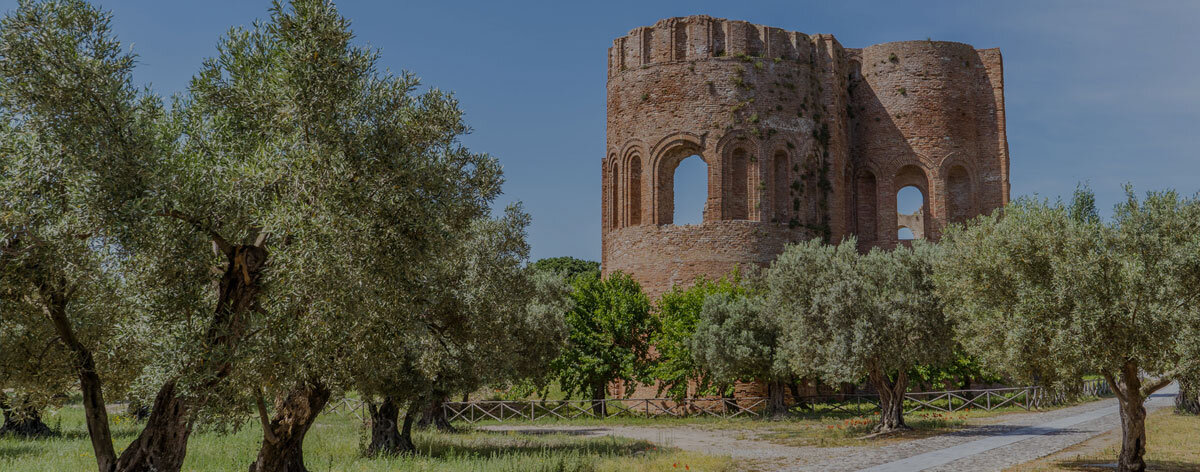The red bricks of the old abbey, known as the Roccelletta
Tourist traveling on the road parallel to the Corace river, that goes towards south Catanzaro (lido), is dazed when he looks at countryside.
He may see a reddish “alien”, a sort of disintegrated space ship landed in the olive grove: it’s the former abbey of santa Maria della Roccella.
It stands out for its grandeur and red-brick architecture that shines among the trees. It is a building that was part of the plan of religious buildings built by the Normans in the 11th century, and probably replaced a byzantine monastic complex.
An act of donation of 1110, promoted by the widow of King Ruggero, testifies that the church of Squillace was the next owner.
Scolacium: discovering the Roman colony
Known as “la Roccelletta”, the ruined abbey is located in the large archaeological park of Scolacium, managed by the Ministry of Cultural Heritage and Activities.
In the agricultural fund, which belonged to Baron Mazza until 1982, the excavations of the last century have also brought to light and to public use the forum, the theatre and the amphitheatre – main architectures of the Roman colony Minervia Scolacium.
A strategic zone for Roman Empire
To claim that the greek Skylletion is the layer underlying Scolacium is arduous, but many archaeologists are strongly sure that it could also arise here, end of the Corace river.
In the second century BC, around 123-122, Skylletion was replaced by the roman foundation of Minervia Scolacium.
Caio Sempronio Gracco was the leader inspiring a series of colonial long term investments.
Around 96 AD there was a re-foundation by the emperor Marco Cocceio Nerva. The aim of the Roman rulers was to improve the quality of the infrastructures. Romans want to establish populous colonies to give employment to large proletarian masses.
Founding a small town there, which developed agriculture and trade, a town that needed public administration services – was in Rome’s economic plans.
The archaeologists show the urban design of Scolacium
The archaeologist Ermanno A. Arslan, who in the 1960s decade supervised the archaeological works to reconstruct the physiognomy of this important piece of Roman Calabria, discovered the urban layout.
The forum was the main square. Its flooring is clear: composed of sesquipedalian square tile (1,5 ft for side), it was crossed by decuman, strategic axis to design routes and blocks. You identify decuman because of its bigger grey paving (named ‘basoli’, they are huge pieces of compact granite).
Amazing finds in Scolacium museum
In the museum you will find a very rich collection of artifacts (coins, vases, marble sculptures), including an amazing huge bronze arm, probably one piece of an enormous statue. The arm was found by mr. Paolo Orsi and his équipe.
Rural archaeology
You can also visit the large space preserving the tools of the old oil mill.
It belonged to the Mazza estate and worked by combustion engine and then electrically.
You can admire the granite wheels (grindstones) used to uniformly crack the olives, and then various presses to continue with the squeezing.

